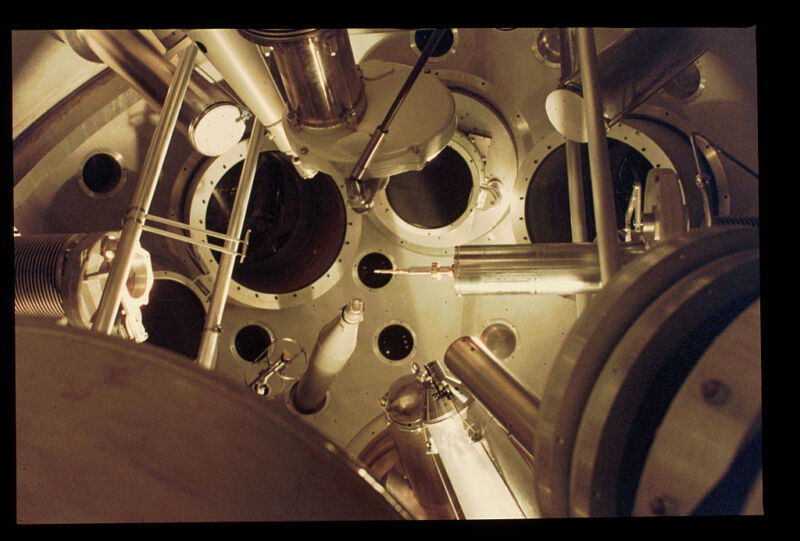First-ever net-energy gain from fusion raises hopes for zero-carbon alternative.
US government scientists have made a breakthrough in the pursuit of limitless, zero-carbon power by achieving a net energy gain in a fusion reaction for the first time, according to three people with knowledge of preliminary results from a recent experiment.
Physicists have since the 1950s sought to harness the fusion reaction that powers the Sun, but no group had been able to produce more energy from the reaction than it consumes—a milestone known as net energy gain or target gain, which would help prove the process could provide a reliable, abundant alternative to fossil fuels and conventional nuclear energy.
The federal Lawrence Livermore National Laboratory in California, which uses a process called inertial confinement fusion that involves bombarding a tiny pellet of hydrogen plasma with the world’s biggest laser, had achieved net energy gain in a fusion experiment in the past two weeks, the people said.
Although many scientists believe fusion power stations are still decades away, the technology’s potential is hard to ignore. Fusion reactions emit no carbon, produce no long-lived radioactive waste, and a small cup of the hydrogen fuel could theoretically power a house for hundreds of years.
The US breakthrough comes as the world wrestles with high energy prices and the need to rapidly move away from burning fossil fuels to stop average global temperatures reaching dangerous levels. Through the Inflation Reduction Act, the Biden administration is plowing almost $370 billion into new subsidies for low-carbon energy in an effort to slash emissions and win a global race for next-generation clean tech.
The fusion reaction at the US government facility produced about 2.5 megajoules of energy, which was about 120 percent of the 2.1 megajoules of energy in the lasers, the people with knowledge of the results said, adding that the data was still being analyzed.
The US Department of Energy has said Energy Secretary Jennifer Granholm and Under-Secretary for Nuclear Security Jill Hruby will announce “a major scientific breakthrough” at the Lawrence Livermore National Laboratory on Tuesday. The department declined to comment further.
The laboratory confirmed that a successful experiment had recently taken place at its National Ignition Facility but said analysis of the results was ongoing.
“Initial diagnostic data suggests another successful experiment at the National Ignition Facility. However, the exact yield is still being determined and we can’t confirm that it is over the threshold at this time,” it said. “That analysis is in process, so publishing the information... before that process is complete would be inaccurate.”
Two of the people with knowledge of the results said the energy output had been greater than expected, which had damaged some diagnostic equipment, complicating the analysis. The breakthrough was already being widely discussed by scientists, the people added.
“If this is confirmed, we are witnessing a moment of history,” said Dr Arthur Turrell, a plasma physicist whose book The Star Builders charts the effort to achieve fusion power. “Scientists have struggled to show that fusion can release more energy than is put in since the 1950s, and the researchers at Lawrence Livermore seem to have finally and absolutely smashed this decades-old goal.”
The $3.5 billion National Ignition Facility was primarily designed to test nuclear weapons by simulating explosions but has since been used to advance fusion energy research. It came the closest in the world to net-energy gain last year when it produced 1.37 megajoules from a fusion reaction, which was about 70 percent of the energy in the lasers on that occasion.
At the launch of a new White House fusion power strategy this year, Congressman Don Beyer, chair of the bipartisan fusion energy caucus, described the technology as the “holy grail” of clean energy, adding: “Fusion has the potential to lift more citizens of the world out of poverty than anything since the invention of fire.”
Most fusion research is focused on a different approach known as magnetic confinement fusion, in which the hydrogen fuel is held in place by powerful magnets and heated to extreme temperatures so the atomic nuclei fuse.
Historically, that science has been done by large publicly funded laboratories, such as the Joint European Torus in Oxford, but in recent years investment has also flooded into private companies promising to deliver fusion power in the 2030s.
In the 12 months to the end of June, fusion companies raised $2.83 billion in investment, according to the Fusion Industry Association, bringing total private-sector investment to date to almost $4.9 billion.
Nicholas Hawker, chief executive of Oxford-based start-up First Light Fusion, which is developing an approach similar to that used at NIF, described the potential breakthrough as “game-changing.”
“It couldn’t be more profound for fusion power,” he said.
- Karlston
-

 1
1




Recommended Comments
There are no comments to display.
Join the conversation
You can post now and register later. If you have an account, sign in now to post with your account.
Note: Your post will require moderator approval before it will be visible.